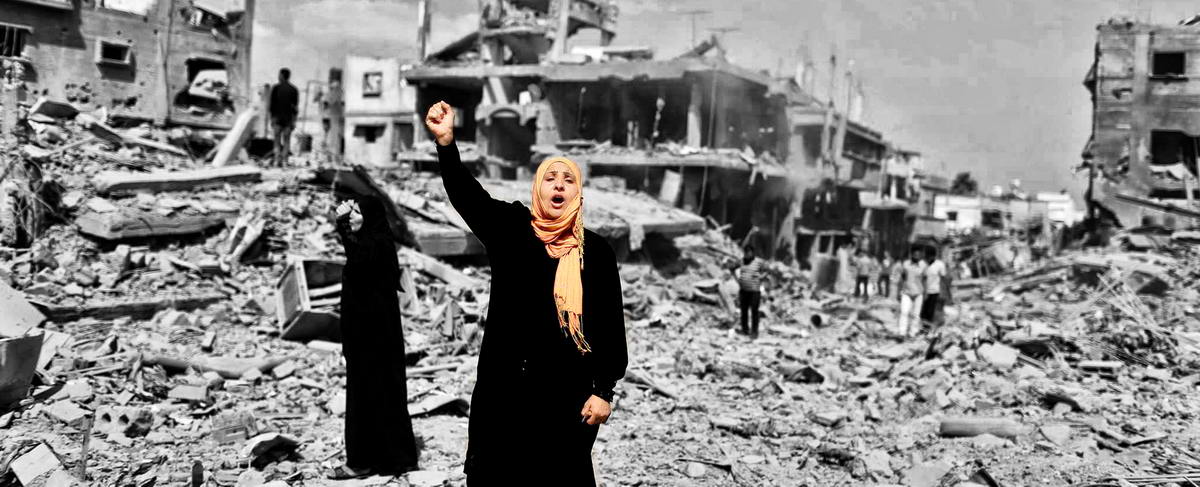Section Two
 Section Two
Section Two
The Zionist Massacres 1950 – 1967
At 3:00 a.m., on February 7, 1951, three Israeli armored cars set off from West Jerusalem heading south-west and stopped at a distance of 3.5 km. . About 30 soldiers got off the cars, crossed the truce line and climbed up the hill to the Palestinian village of Sharafat.
They cut a hole in the barbed wire which encircled the village, went to the mayor’s house, laid mines under its walls and those of the neighbors’, and blew up the two houses over the heads of their residents. The soldiers soon withdrew from the scene under the protection of the heavy firing of their companions.
As a result, 10 Palestinians were killed (two elders, three women, five children), and eight others were injured.
Jewish forces attacked the Palestinian villages of Rantees and Falameh with a view to undermining their houses. In Rantees, the local National Guard resisted the aggressors and forced them to retreat after having killed two men and injured two others of the village’s inhabitants.
In Falameh, the incursion was almost a battalion fully equipped with artillery, ground mines and grenades, and machine guns. It bombed the village with mortars. A fierce battle then followed between the aggressors and the National Guard of the village. It lasted for several hours. As the Jewish attacking forces eventually withdrew, a number of bombarded houses, a slain mayor and seven other dead nationals were left behind.
At 20:30 hours of February 28, 1955, Jewish forces crossed the truce lines and penetrated the Gaza territory as deep as 3km. The Israeli armed forces were then divided into three groups: one headed to the water reservoir station, and blew it up; the second was commissioned to attack the Egyptian military installations with machine guns, mortars and hand grenades, whereas the third group was assigned the task of laying ground mines with the intent of obstructing any possible assistance from nearby.
The roar of the explosion at the water station was heard from afar. It was followed by a hail of fire on the Egyptian barracks. As the commander of the latter called for help from the closest military post, a number of armored cars moved towards the barracks in response to the appeal. They however were caught in the Israeli ambush. Some 25 Egyptian soldiers were killed by the road blast, 14 Gazans were shot during the attack, and 33 injured.
At midnight of March 28, 1954, a 300-soldier Israeli military force crossed the truce lines and penetrated the West Bank territory as deep as 3.5 km until they came to the borders of the Palestinian village of Nahhaleen, near Bethlehem. At that point, the Israeli force was divided into two parts: one to encircle the village from three directions, engage the National Guard with heavy machine-gun fire and hand grenades, thus vcovering the other part of the force which would enter the village, bombard it with grenades, kill people, lay down mines and blow up houses and other utilities. The National Guard managed to defuse the mines. However, 8 people were killed and 14 injured among the villagers. Three Jordanian soldiers were also killed and five others injured as a road mine blasted their car when they rushed to help the village.
(More details…)
(More details…)
In its preparation for the tripartite aggression against Egyp in 1956, Israel undertook very comprehensive restrictive measures against its Arab citizens, under the pretext of ensuring internal security during that aggression
(More details…)
Although the respective UN resolution on the partition of Palestine was already passed, the inhabitants of Qalqilya/Tulkarm Province, precociously felt the Zionist danger
(More details…)
